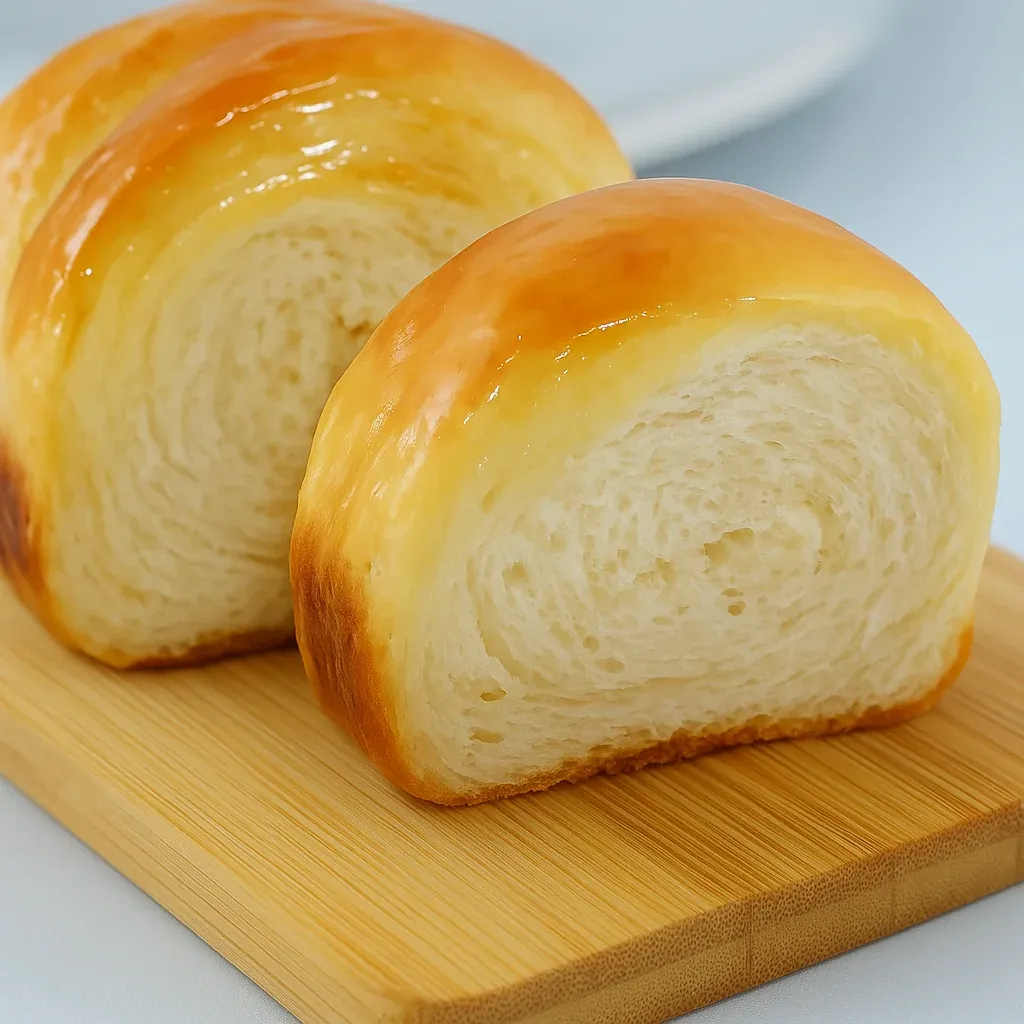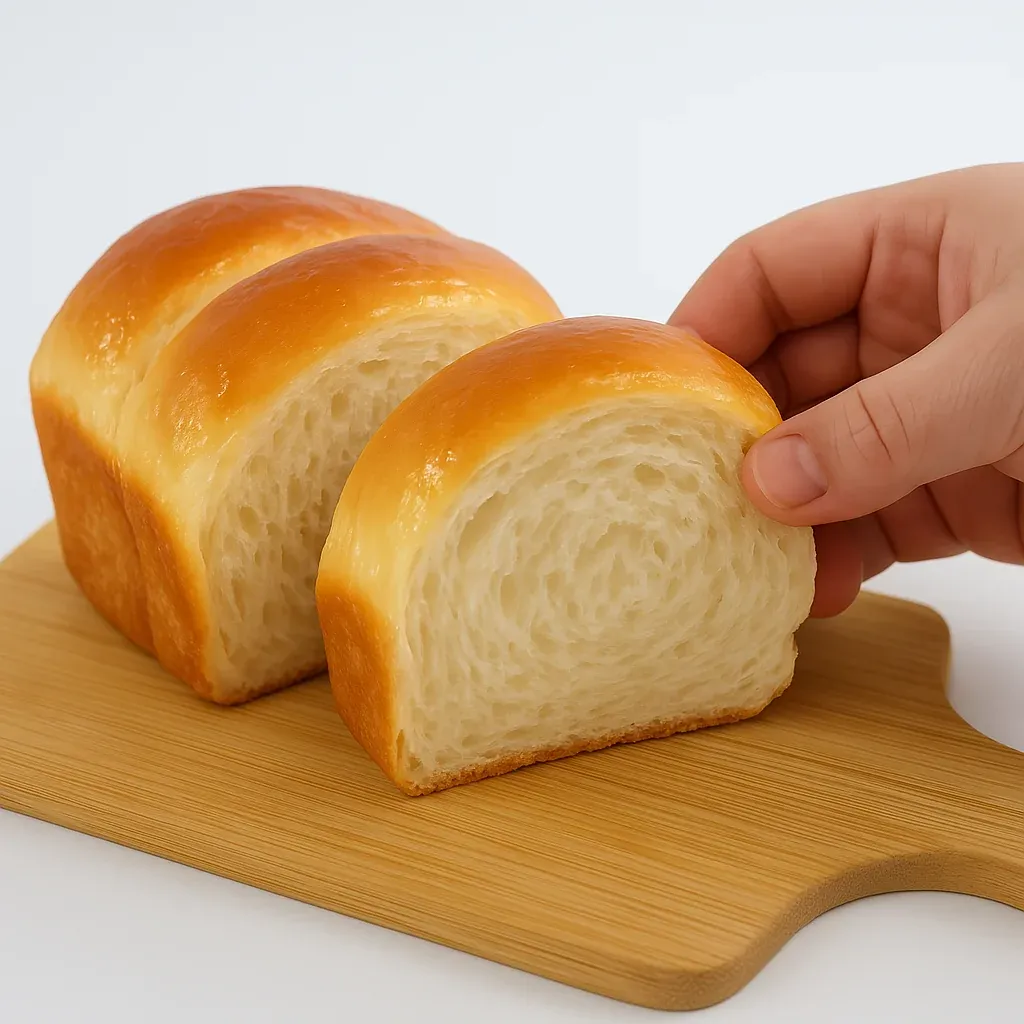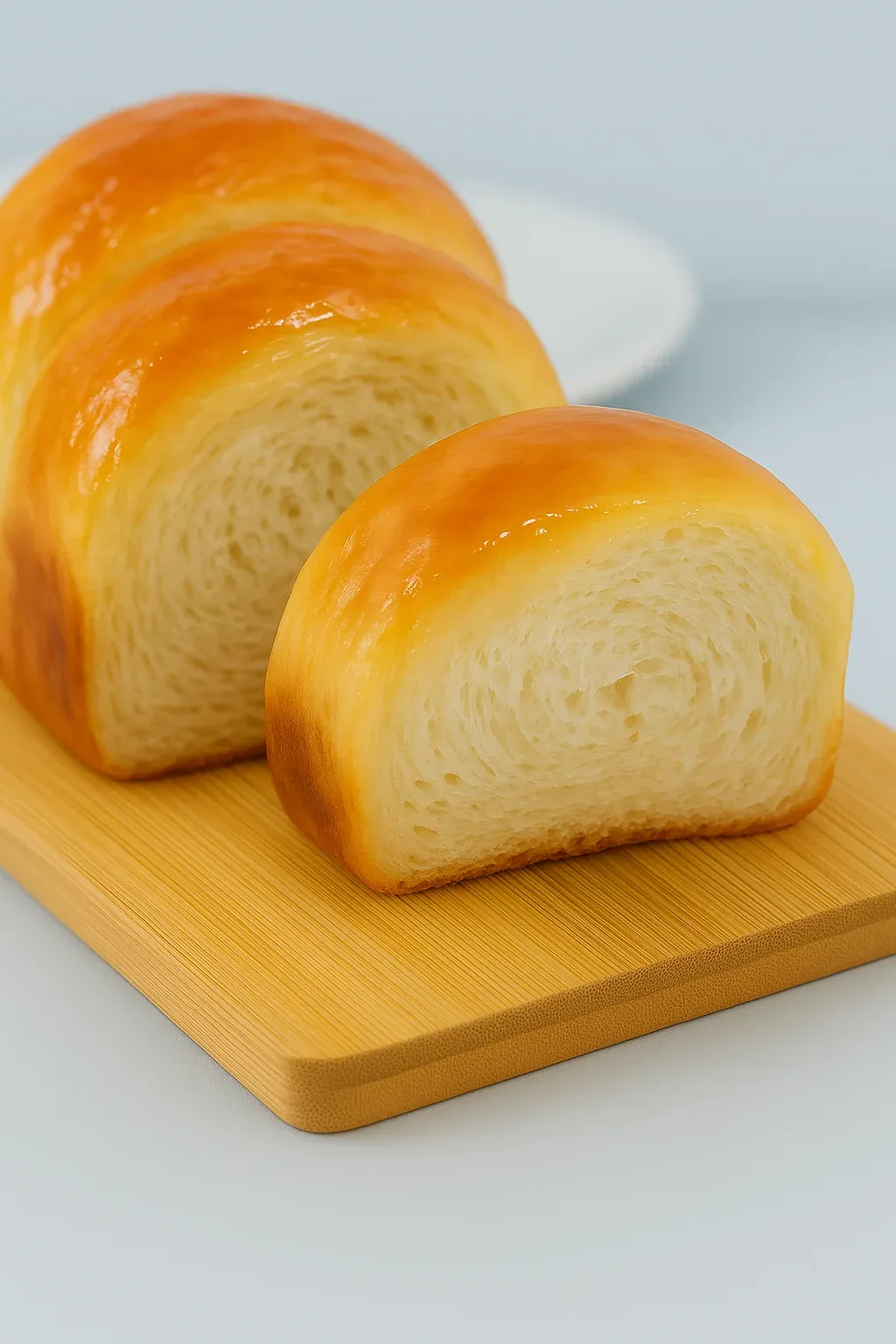 Pin
Pin
This fluffy condensed milk bread creates pillowy soft, melt-in-your-mouth slices that strike the perfect balance between sweet and buttery. Each delicate roll tears apart with the gentlest pull, revealing a tender crumb that pairs perfectly with the sweet butter glaze.
I first made this bread during a rainy weekend when I was craving something comforting yet special. The rich aroma that filled my kitchen as it baked convinced me this would become a staple in my baking rotation. Now my family specifically requests this bread for special brunches and holiday mornings.
Ingredients
- Milk: At room temperature ensures proper yeast activation and creates the perfect dough consistency
- Sweetened condensed milk: Adds that distinctive richness and subtle sweetness throughout the bread
- Instant yeast: Provides reliable rise without the need for proofing
- All-purpose flour: Works perfectly for this recipe making it accessible for all home bakers
- Butter: In both the dough and glaze creates irresistible richness and tender texture
- Egg: Helps with structure and creates a beautiful golden color when baked
- Salt: Balances the sweetness and enhances the bread flavor
Step-by-Step Instructions
- Mix the wet ingredients:
- Combine room temperature milk, sweetened condensed milk, egg, sugar, and yeast in a large bowl. Whisk until completely integrated. The consistent temperature helps activate the yeast properly while the condensed milk begins building that signature flavor.
- Add dry ingredients:
- Incorporate the flour and salt into your wet mixture. Mix thoroughly until a shaggy dough forms. Add the softened butter in small pieces, continuing to mix until the butter is fully incorporated. The dough will initially be sticky but will come together as you work it.
- Develop the gluten:
- Transfer dough to a lightly floured surface and knead for 8 to 10 minutes. You want to develop enough gluten for a smooth, elastic consistency that springs back when gently pressed. The dough should feel soft and pliable without being overly sticky.
- First rise:
- Shape the kneaded dough into a smooth ball and place in an oiled bowl, turning once to coat the surface. Cover with a clean kitchen towel or plastic wrap and allow to rise in a warm, draft-free spot for about 1 hour until doubled in size. This slow rise develops flavor and texture.
- Shape the loaves:
- Gently punch down the risen dough to release air bubbles. Divide it into two equal portions. Roll each portion into a rectangle approximately 8 by 14 inches. Starting from the short end, roll the dough tightly into a log, pinching the seam to seal completely.
- Create pull-apart sections:
- Using a sharp knife or bench scraper, slice each log into seven equal pieces. Arrange seven pieces in each parchment-lined loaf pan, placing them with cut sides facing the ends of the pan. This creates the beautiful pull-apart texture when baked.
- Second rise:
- Cover the loaf pans and allow the dough to rise again for 45 minutes until puffy and nearly doubled. This second rise ensures the perfect light texture. The dough should fill most of the pan and look soft and pillowy.
- Bake to golden perfection:
- Brush the tops gently with egg wash for a beautiful shine. Bake in a preheated 350°F oven for 20 to 22 minutes until the tops are golden brown and the internal temperature reaches 190°F. The kitchen will fill with an irresistible aroma as they bake.
- Apply the sweet butter glaze:
- While the bread is still warm but not hot, combine softened butter and sweetened condensed milk to create a glossy glaze. Brush generously over the tops of the loaves, allowing it to melt slightly into the bread. This final touch adds incredible flavor and a beautiful finish.

The sweetened condensed milk is truly the secret weapon in this recipe. Its concentrated sweetness and rich mouthfeel transform what would be an ordinary milk bread into something extraordinary. I discovered this ingredient swap when I ran out of sugar for a traditional recipe and decided to experiment. The result was so superior that I never went back to the original version.
Achieving Perfect Texture
The key to achieving that cloud-like texture lies in proper kneading and rising time. Unlike crusty artisan breads, this enriched dough benefits from thorough gluten development followed by patient rising. Avoid rushing either rise, as the time allows the yeast to work its magic while developing complex flavors. The butter incorporated into the dough creates natural steam during baking that contributes to the exceptionally soft interior.

Serving Suggestions
This versatile bread works beautifully across multiple settings. For breakfast, toast slices lightly and spread with additional butter or jam. For an elevated dessert, warm slightly and top with fresh berries and whipped cream. The bread also makes exceptional French toast, absorbing the custard mixture while maintaining its structure. For a savory application, try pairing thin slices with ham and cheese for a sophisticated sandwich that balances sweet and savory perfectly.
Storage Tips
These loaves maintain their freshness remarkably well compared to standard bread. Store completely cooled bread in an airtight container at room temperature for up to 3 days. For longer storage, wrap individual slices in plastic wrap and place in a freezer bag for up to 3 months. Thaw frozen slices at room temperature or toast directly from frozen. If you notice the bread beginning to dry out, a few seconds in the microwave restores that just-baked softness.
Flavor Variations
The basic recipe creates a perfect canvas for creative adaptations. Try adding 1 tablespoon of citrus zest to the dough for a bright variation. Cinnamon sugar swirled into the rolled dough creates a breakfast roll effect. For chocolate lovers, sprinkle mini chocolate chips before rolling the dough. During holiday seasons, I incorporate warm spices like cardamom, nutmeg, and vanilla for a festive twist that pairs beautifully with winter beverages.
Recipe FAQs
- → How do I ensure the dough rises properly?
Make sure your yeast is fresh and activate it in a warm liquid (not hot) to help the dough rise properly. Additionally, let the dough rest in a warm, draft-free location.
- → Why is my bread not soft and fluffy?
This could be due to under-kneading the dough or not allowing it to rise long enough. Knead until the dough is elastic and ensure it doubles in size during the first proof.
- → What can I use as a substitute for condensed milk?
You can use a mixture of evaporated milk and sugar as a substitute for condensed milk, though it won't be as rich or sweet.
- → Can I make this bread without a loaf pan?
Yes, you can shape the dough into rolls or a freeform loaf and bake it on a lined baking sheet instead of using a loaf pan.
- → How should I store this bread?
Store the bread in an airtight container or bread bag at room temperature for up to 3 days. For longer storage, freeze the bread and thaw as needed.
- → Can I use a stand mixer instead of kneading by hand?
Yes, a stand mixer fitted with a dough hook makes kneading quicker and easier. Knead on medium speed until the dough is smooth and stretchy.
